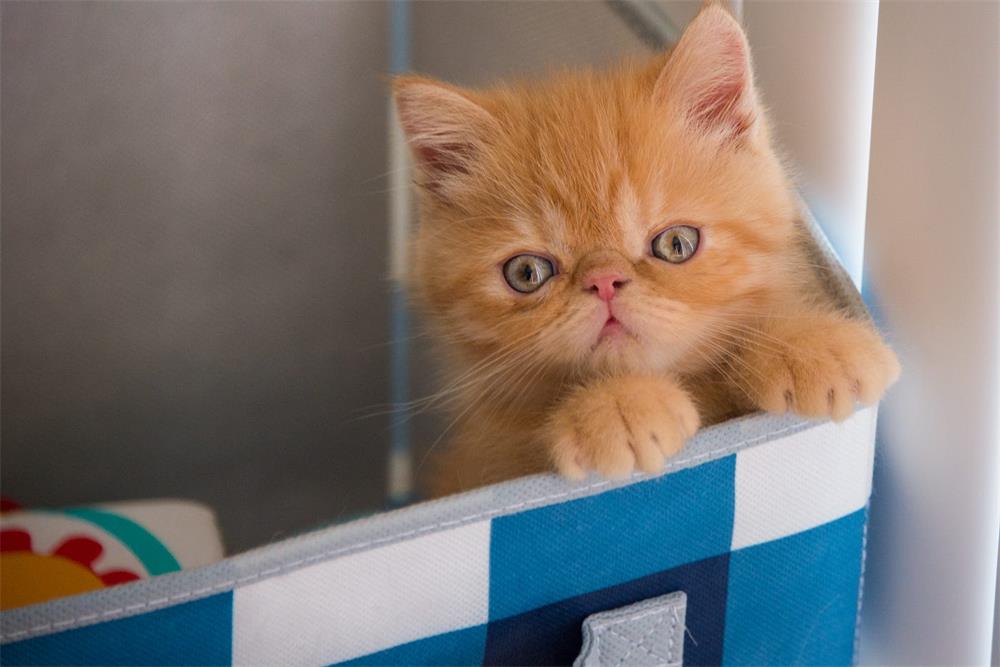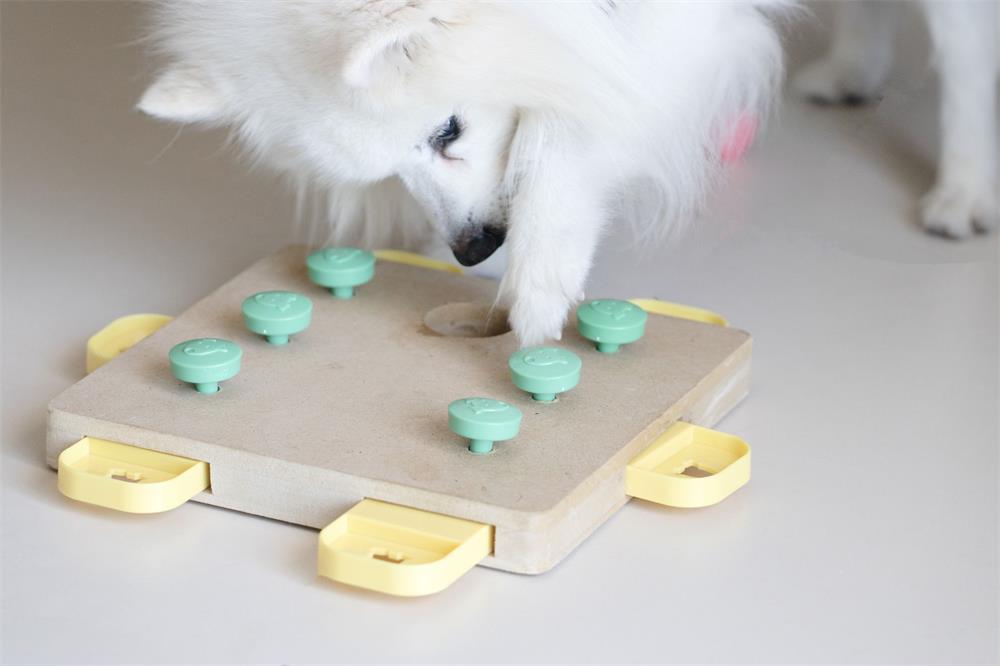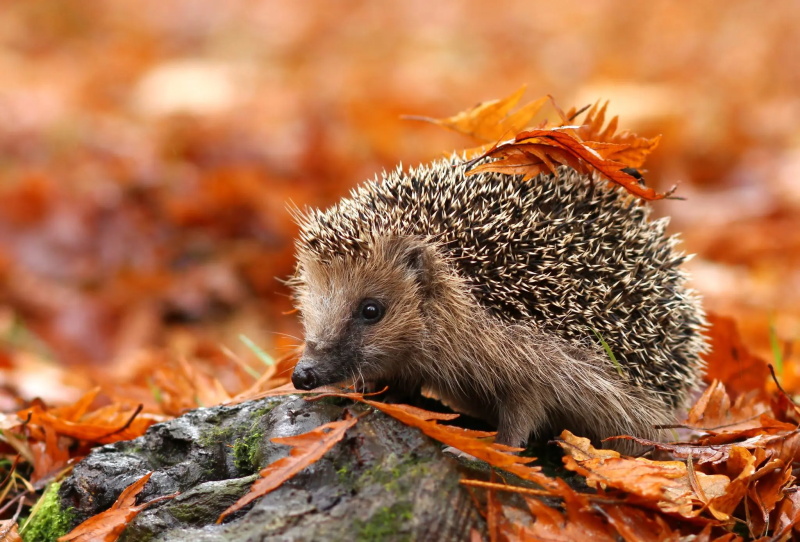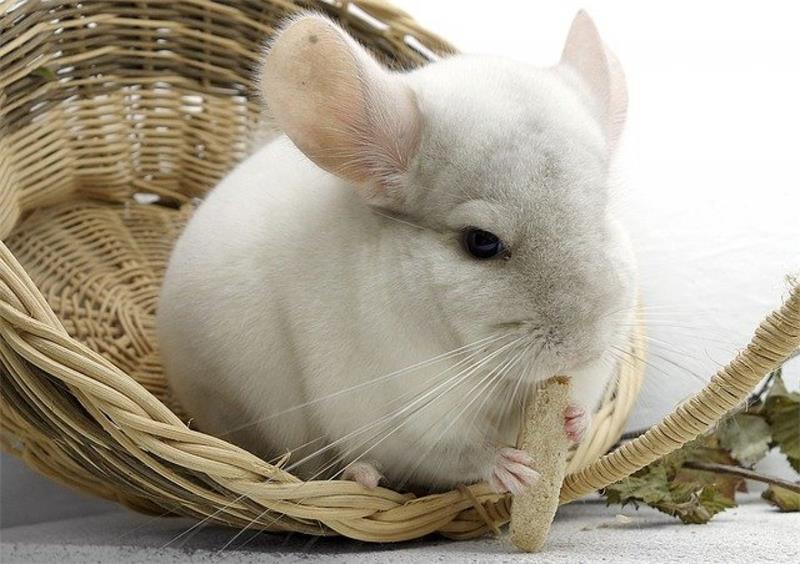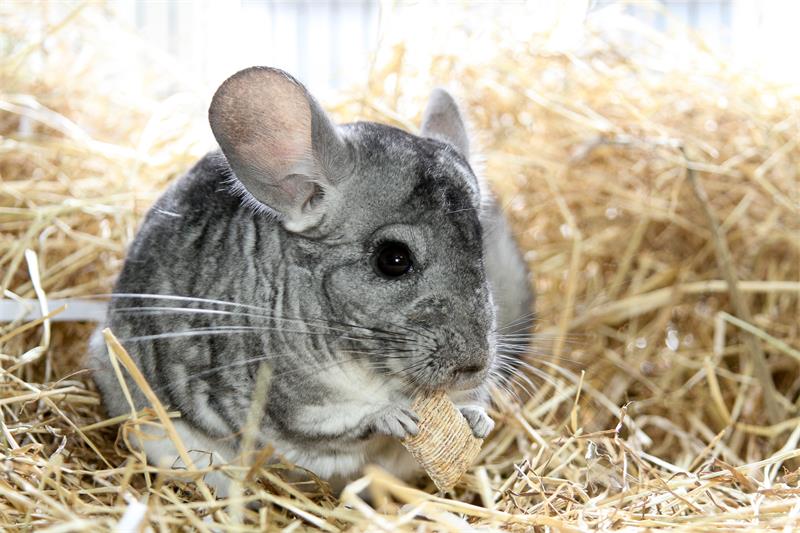A collection of advice and techniques on how to bond with your chinchilla, train them to accept being picked up and held, and socialize them with other animals or people.
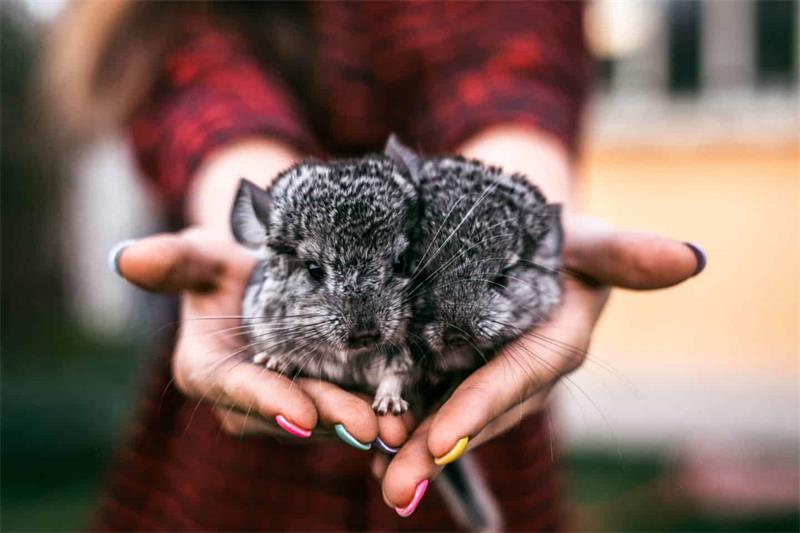
Table of Contents
Chinchillas are adorable, fluffy rodents that can make wonderful pets for the right person. However, they are not easy to tame and handle, as they are naturally shy, skittish, and independent animals. Chinchillas need a lot of patience, trust, and positive reinforcement to bond with their owners and accept being picked up and held. They also need proper socialization with other chinchillas or people to prevent loneliness and boredom.
In this article, we will provide you with some advice and techniques on how to tame and handle your chinchilla, as well as how to socialize them with other animals or people. By following these tips, you can enjoy a rewarding relationship with your furry friend.
What You Need to Know Before Taming and Handling Your Chinchilla
Before you start taming and handling your chinchilla, there are some things you need to know about their behavior and personality.
- Chinchillas are nocturnal animals, which means they are most active at night and sleep during the day. This means that they may not be very responsive or interested in interacting with you during daylight hours. You should respect their natural rhythm and avoid disturbing them when they are sleeping. The best time to interact with your chinchilla is in the evening or early morning, when they are more alert and playful.
- Chinchillas are prey animals, which means they have a strong instinct to escape from potential threats. This means that they may be easily startled by loud noises, sudden movements, or unfamiliar objects or people. You should avoid making any sudden or loud noises around your chinchilla, and approach them slowly and gently. You should also provide them with a safe and secure cage that has plenty of hiding places where they can retreat if they feel scared or stressed.
- Chinchillas are social animals, which means they need companionship and stimulation from other chinchillas or people. This means that they may become lonely, depressed, or bored if they are kept alone or isolated for long periods of time. You should provide your chinchilla with at least one same-sex cage mate of similar age and temperament, or spend at least an hour a day interacting with them outside their cage. You should also provide them with toys, treats, and enrichment activities to keep them mentally and physically stimulated.
- Chinchillas are intelligent animals, which means they can learn new behaviors and skills through positive reinforcement. This means that you can use treats, praise, and gentle touch to reward your chinchilla for doing something you want them to do, such as coming to you, stepping onto your hand, or allowing you to pet them. You should avoid using any negative reinforcement, such as yelling, hitting, or punishing your chinchilla for doing something you don’t want them to do, as this will only make them fearful and distrustful of you.
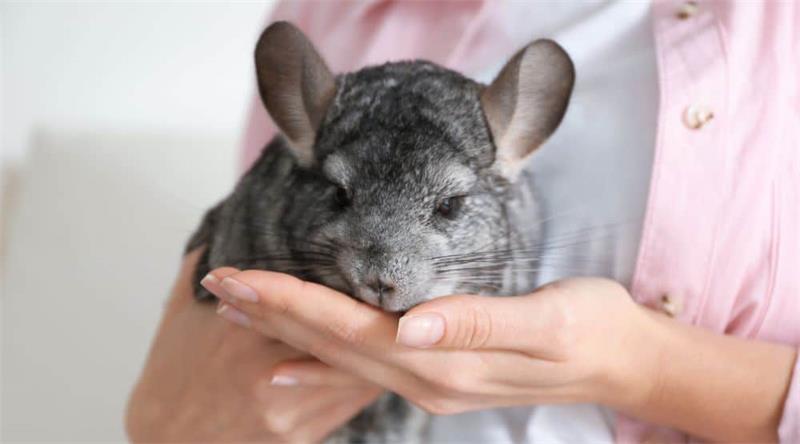
How to Tame Your Chinchilla
Taming your chinchilla means getting them used to your presence and touch, and building a bond of trust and affection with them. This process may take weeks or months depending on your chinchilla’s personality and history. Some chinchillas may be more curious and friendly than others, while some may be more timid and cautious. Some chinchillas may have been handled more often by their previous owners or breeders than others.
The key to taming your chinchilla is patience. You should not rush or force your chinchilla to interact with you if they are not ready or willing. You should respect their boundaries and signals, and let them set the pace of the interaction. You should also be consistent and persistent in your efforts to tame your chinchilla.
Here are some steps you can follow to tame your chinchilla:
- Let your chinchilla settle in. When you first bring your chinchilla home, you should give them some time to adjust to their new environment before trying to interact with them. You should place their cage in a quiet and dimly lit room where they can feel safe and comfortable. You should provide them with fresh water, food (chinchilla pellets and hay), bedding (aspen shavings), a nest box, a dust bath, and some toys to chew on. You should leave them alone for the first few days, only checking on them to make sure they have enough food and water. You should also talk to them softly and calmly from a distance to get them used to your voice.
- Offer your chinchilla treats. After your chinchilla has settled in, you can start offering them some treats from your hand to entice them to come closer to you. You can use dried fruits, nuts, seeds, or commercial chinchilla treats as rewards, but only in moderation as they are high in sugar and fat. You should avoid giving your chinchilla any fresh fruits or vegetables, as they can cause digestive problems. You should hold the treat between your fingers and extend your hand slowly and gently toward your chinchilla’s cage. You should let your chinchilla sniff your hand and take the treatment at their own pace. You should not try to touch or grab your chinchilla at this stage, as this may scare them away. You should repeat this process several times a day until your chinchilla becomes comfortable with taking treats from your hand.
- Pet your chinchilla gently. Once your chinchilla is used to taking treats from your hand, you can try to pet them gently with your other hand. You should start by stroking their head or chin lightly, as these are the areas where they groom each other. You should avoid touching their ears, eyes, nose, mouth, or tail, as these are sensitive areas that may make them uncomfortable or defensive. You should also avoid petting their back or belly, as this may trigger their fur slip mechanism. You should watch your chinchilla’s body language and vocalizations to see how they react to your touch. If they seem relaxed and happy, you can continue petting them for a few seconds. If they seem tense, nervous, or annoyed, you should stop petting them and give them some space. You should repeat this process several times a day until your chinchilla enjoys being petted by you.
- Pick up your chinchilla carefully. After your chinchilla is comfortable with being petted by you, you can try to pick them up carefully. There are different methods you can use to pick up your chinchilla safely, but the most common one is using both hands to scoop them up from underneath. You should place one hand under or around their chest area and lift them slightly off the ground. You should then support their hind legs and lower body with your other hand. You should hold your chinchilla close to your body for security and keep them upright to protect their delicate spine. You should avoid picking up your chinchilla from above, by their tail, or by their neck, as these methods may hurt or scare them. You should also avoid holding your chinchilla too tightly or too loosely, as this may make them feel trapped or insecure. You should only pick up your chinchilla for a few minutes at a time and put them back in their cage if they show signs of stress or discomfort.
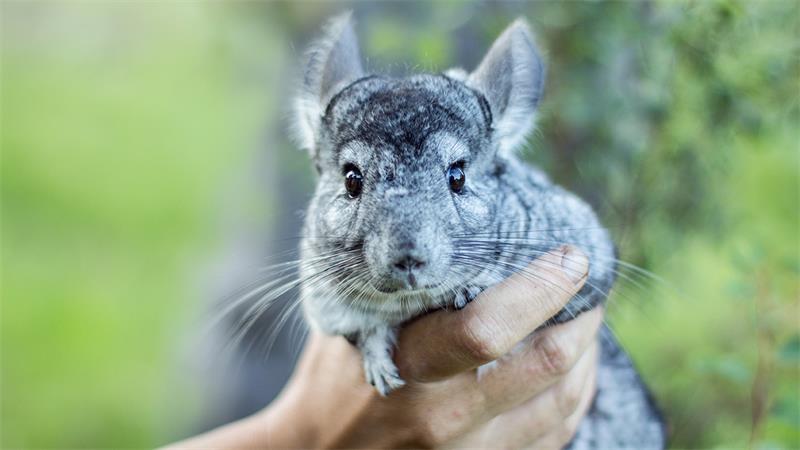
How to Handle Your Chinchilla
Handling your chinchilla means holding them in a way that makes them feel comfortable and secure, and interacting with them in a positive and respectful manner. This process may take days or weeks depending on how often you handle your chinchilla and how well they respond to you.
The key to handling your chinchilla is gentleness. You should not squeeze or shake your chinchilla when you hold them, as this may injure or frighten them. You should also not force or restrain your chinchilla when you handle them, as this may make them resentful or aggressive towards you. You should always let your chinchilla decide when they want to be handled and when they want to be left alone.
Here are some tips you can follow to handle your chinchilla:
- Hold your chinchilla in a comfortable position. There are different ways you can hold your chinchilla depending on their preference and personality. Some common positions are:
- Over the shoulder. You can place your chinchilla’s front paws over your shoulder and hold their body close to your chest with one hand. You can use your other hand to pet their back or head gently. This position may make your chinchilla feel secure and relaxed, as they can see what is going on around them and hear your heartbeat.
- In your lap. You can sit down and place your chinchilla on your lap or between your legs. You can use both hands to pet their head or chin lightly, or let them snuggle into your arms or clothing. This position may make your chinchilla feel warm and cozy, as they can enjoy your body heat and scent.
- In a towel. You can wrap a towel around your chinchilla to keep them calm and prevent them from escaping or scratching you. You can hold the towel in front of you with both hands, or place it on your lap or shoulder. You can use the towel to cover their eyes or ears if they are nervous or stressed by loud noises or bright lights.
- In a carrier. You can use a small and sturdy carrier to transport your chinchilla from one place to another, such as from their cage to a play area or to the vet. You should line the carrier with some bedding, hay, and a few treats to make it comfortable and familiar for your chinchilla. You should also secure the carrier with a strap or a handle to prevent it from moving or falling.
- Interact with your chinchilla positively. There are different ways you can interact with your chinchilla when you hold them depending on their mood and personality. Some common interactions are:
- Talking to your chinchilla softly. You can talk to your chinchilla softly and calmly when you hold them to get them used to your voice and make them feel safe and loved. You can use their name, praise them, or tell them stories. You can also mimic their sounds, such as chirps, squeaks, or barks, to communicate with them.
- Petting your chinchilla gently. You can put your chinchilla gently and slowly when you hold them to show them affection and make them feel relaxed. You can stroke their head, chin, ears, or back lightly with your fingers or palm. You should avoid touching their eyes, nose, mouth, tail, or belly, as these are sensitive areas that may make them uncomfortable or defensive.
- Giving your chinchilla treats. You can give your chinchilla treats when you hold them to reward them for being good and make them happy. You can use dried fruits, nuts, seeds, or commercial chinchilla treats as rewards, but only in moderation as they are high in sugar and fat. You should avoid giving your chinchilla any fresh fruits or vegetables, as they can cause digestive problems. You should also avoid giving your chinchilla any human food, such as chocolate, candy, bread, cheese, or meat, as they are toxic for them.
- Playing with your chinchilla. You can play with your chinchilla when you hold them to stimulate them mentally and physically and make them have fun. You can use toys, such as balls, tunnels, rings, or chew toys, to engage them in different activities. You can also use your hands to tickle their chin or belly lightly, or let them nibble on your fingers gently.
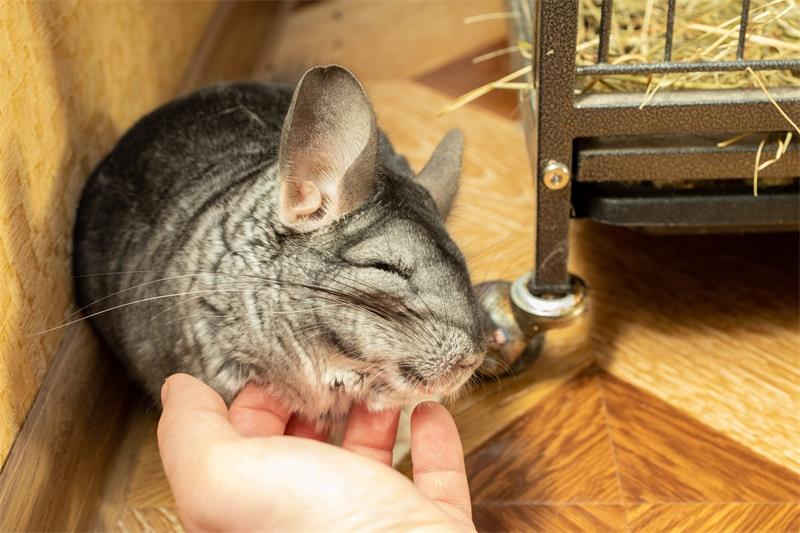
How to Socialize Your Chinchilla
Socializing your chinchilla means introducing them to other chinchillas or people and helping them get along well with them. This process may take days or weeks depending on how many new friends you want your chinchilla to have and how well they adapt to each other.
The key to socializing your chinchilla is gradualness. You should not introduce too many new friends at once or force them to interact if they are not ready or willing. You should respect their personalities and preferences and let them choose who they want to be friends with. You should also be prepared for some conflicts and challenges along the way.
Here are some tips you can follow to socialize your chinchilla:
- Socialize with other chinchillas. Chinchillas are social animals that need companionship and stimulation from other chinchillas. You should provide your chinchilla with at least one same-sex cage mate of similar age and temperament, or adopt a bonded pair or group of chinchillas from a reputable breeder or rescue. You should avoid keeping a male and a female chinchilla together unless they are both neutered or spayed, as they can breed very quickly and produce many offspring. You should also avoid keeping chinchillas of different species or sizes together, as they may not get along well or may injure each other.
If you want to introduce a new chinchilla to your existing one, you should follow these steps:
- Quarantine the new chinchilla. You should keep the new chinchilla in a separate cage and room for at least two weeks to make sure they are healthy and free of any diseases or parasites that could infect your existing chinchilla. You should also take the new chinchilla to the vet for a check-up and vaccination before introducing them to your existing chinchilla.
- Introduce the chinchillas by smell. You should place the cages of the chinchillas next to each other with a small gap between them so that they can smell each other but not touch each other. You should also swap some bedding, toys, or treats between the cages to let them get used to each other’s scent. You should observe how the chinchillas react to each other and look for signs of curiosity, interest, or aggression.
- Introduce the chinchillas by sight. You should place the cages of the chinchillas closer together so that they can see each other but not touch each other. You should also remove any items that could block their view or cause territorial disputes, such as nest boxes, food bowls, or water bottles. You should observe how the chinchillas react to each other and look for signs of curiosity, interest, or aggression.
- Introduce the chinchillas in a neutral area. You should choose a neutral area that is unfamiliar and spacious for both chinchillas, such as a bathroom, a hallway, or a playpen. You should remove any items that could cause territorial disputes or injuries, such as furniture, wires, or sharp objects. You should also provide some hiding places, toys, and treats to make the area more comfortable and fun for the chinchillas. You should place the chinchillas in a neutral area at the same time and let them explore and interact with each other. You should supervise them closely and intervene if they show signs of aggression, such as chasing, biting, or fighting. You should separate them immediately and try again later if they do not get along well.
- Introduce the chinchillas in their cage. If the chinchillas get along well in the neutral area, you can try to introduce them to their cage. You should choose a large and clean cage that has enough space and resources for both chinchillas. You should also rearrange or replace some items in the cage to make it less familiar and more neutral for both chinchillas. You should place the chinchillas in the cage at the same time and let them settle in and establish their hierarchy. You should supervise them closely and intervene if they show signs of aggression, such as chasing, biting, or fighting. You should separate them immediately and try again later if they do not get along well.
- Socialize with other people. Chinchillas can also get along well with other people if they are introduced properly and treated respectfully. You can socialize your chinchilla with other people by following these tips:
- Choose friendly and gentle people. You should only introduce your chinchilla to people who are friendly and gentle towards animals and who understand how to handle them properly. You should avoid introducing your chinchilla to people who are loud, rough, or impatient with animals or who may harm them intentionally or unintentionally.
- Start with familiar people. You should start by introducing your chinchilla to people who are familiar with you and your chinchillas, such as your family members or close friends. You should let your chinchilla see and hear these people regularly so that they can recognize them and feel comfortable around them.
- Move on to unfamiliar people. After your chinchilla is used to familiar people, you can move on to introducing them to unfamiliar people, such as your neighbors or visitors. You should let your chinchilla see and hear these people from a distance at first so that they can get used to their presence and voice.
- Let your chinchilla approach people. You should let your chinchilla approach people at their own pace and with curiosity. You should not force or push your chinchilla to interact with people if they are not ready or willing. You should respect their boundaries and signals and let them choose who they want to be friends with.
- Offer your chinchilla treats. You can offer your chinchilla treats from your hand or from the hand of the person you want to introduce them to. You can use dried fruits, nuts, seeds, or commercial chinchilla treats as rewards, but only in moderation as they are high in sugar and fat. You should avoid giving your chinchilla any fresh fruits or vegetables, as they can cause digestive problems. You should also avoid giving your chinchilla any human food, such as chocolate, candy, bread, cheese, or meat, as they are toxic for them.
- Supervise your chinchilla closely. You should supervise your chinchilla closely when they interact with other people and intervene if they show signs of stress or discomfort. You should also educate the people on how to handle your chinchilla properly and respectfully and correct them if they make any mistakes.
Conclusion
Chinchillas are cute and cuddly pets that can be tamed and handled with patience and care. By following the advice and techniques in this article, you can bond with your chinchilla, train them to accept being picked up and held, and socialize them with other animals or people. By doing so, you can enjoy a rewarding relationship with your furry friend.


